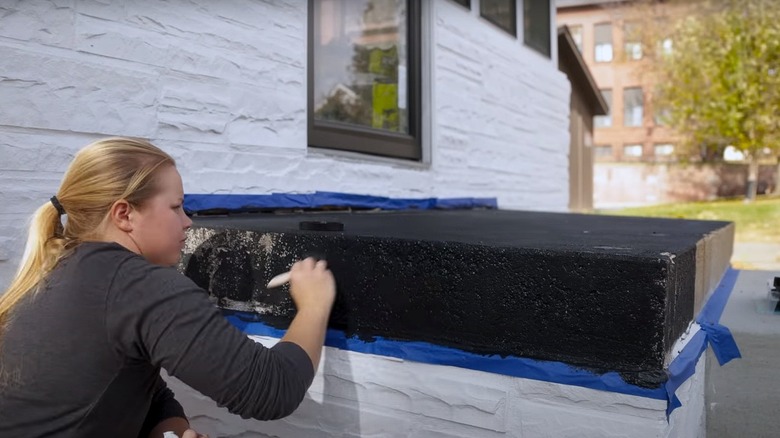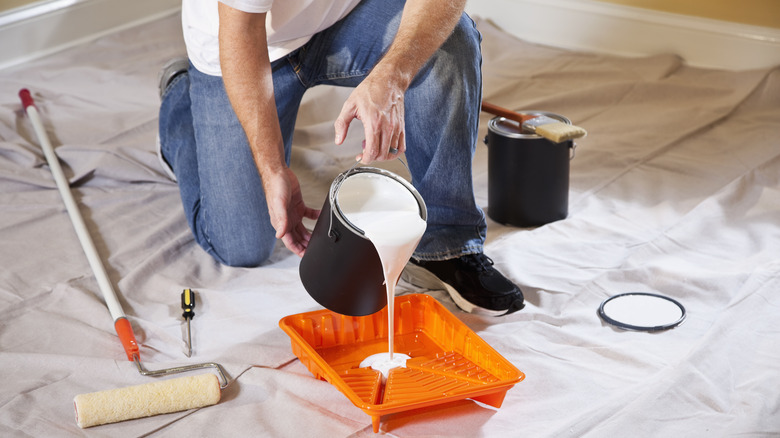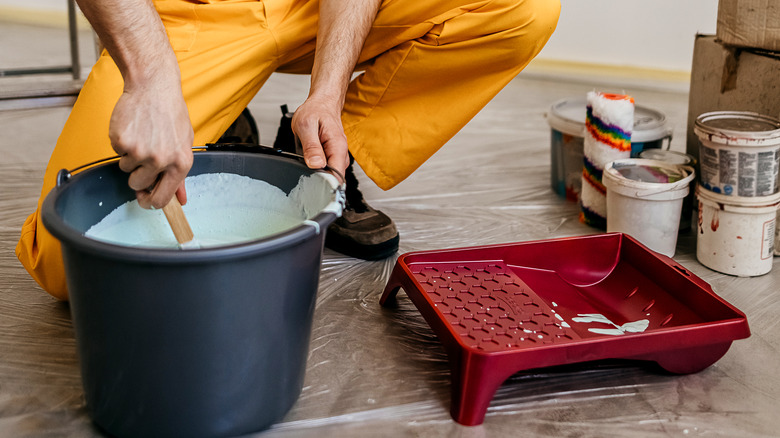Why You Should Add Sand To Paint Before Painting Your Porch
As a homeowner, you know how the smallest details can make a world of difference. Those minor touches, subtle improvements, and creative twists are what truly transform a house into a home. One such detail revolves around the welcoming space at the front of your home — your porch. A fresh coat of paint can significantly transform your porch, but have you ever considered adding sand to the paint before application? As strange as it might sound initially, this innovative technique boasts multiple benefits, the most crucial being increased safety. But it doesn't stop there. Adding sand to your paint does more than just make your porch safer. It imparts a unique aesthetic appeal to the surface.
As you delve deeper into the benefits of this technique, it becomes evident why it's a game-changer — the sand provides the paint with texture, which prevents it from being slippery underfoot. we'll dive deeper into these benefits and offer practical advice on how you can effectively implement this strategy in your next painting project.
The advantages of adding sand to paint
Your porch, which is a buffer between indoor tranquility and the outdoor elements, is vulnerable to weather changes. Sleet, rain, or even a hint of morning dew can turn your porch surface into a potential accident zone. Adding sand to your paint addresses this issue head-on by creating an anti-slip surface – significantly reducing the risk of falls and mishaps. This added traction is a necessity, particularly in homes with children, older adults, or pets. While the porch can be a delightful space for relaxation and recreation, safety should always remain a priority.
But it's not all about practicality. The aesthetic dimension is equally important when considering home improvements. Adding sand to paint gives your porch a unique, textured look, setting your space apart. It provides depth and dimension, creating an attractive surface that enhances the overall curb appeal of your home. With this approach, you have an opportunity to get creative. Different sand types and varying sand-to-paint ratios can result in a plethora of textures and finishes — from a subtle texture that adds a touch of sophistication, to a rough finish that's rustic and bold, the choices are endless.
How to apply sand to paint
To fully reap the benefits of this innovative approach, getting the mixing technique right is crucial. Begin by choosing the right sand. Experts often recommend silica sand, but feel free to experiment with other types. Typically, a 6% sand mix works well, but this isn't a hard-and-fast rule. You can adjust the ratio based on your desired result. For a rougher texture, add more sand; for a subtler effect, reduce the sand quantity. Using a stir stick, mix the paint and sand until you achieve a consistent blend. It's vital to keep stirring the mixture as you work, preventing the sand from settling at the bottom of your paint can.
When painting, there are various other things to keep in mind. First, try to apply the sand-paint mixture using a paint roller for smooth, even coverage. Also, try not to keep the pain application at the right consistency — not too thin or thick. Furthermore, remember to let the first coat dry thoroughly before applying the second. This drying time allows the sand particles to adhere properly, creating a sturdy, non-slip surface. Finally, after applying the last coat, give your porch ample time to dry and cure before you start using it, which will ensure that the surface is fully prepared to handle foot traffic.


